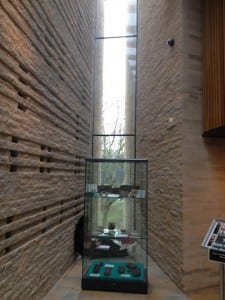Upon arriving at our final idea, our group are now starting to begin questioning the integrate details of our piece. How will the audience react? How will we lead the audience to the piece? What will our integral roles be? Mike Pearson sums up our creative process at this time by saying “Performance involves an activity, an audience and a place, then creative opportunities reside in the multiple creative articulations of us, them and there.” (2010, P19). From this we need to identify and narrow down our key ideas to finalise our project.
This said, our idea has taken shape over the last week. We have explored more into the concept of masking. As stated by Sam, about the idealisation of many paintings to create a more perfected visual. From this we decided to have ourselves masked but on reflection, we thought that conventional theatre mask would make our site specific performance more theatrical. So we decided to develop the idea of masking but not in a literal sense.
An idea was suggested within our group by Kirsty to have a half make up; have one side what would be deemed as ‘perfect’ and the other side make up free and then during the performance the make-up would be blurred and smudged together to overlap the two showing the idealisation.
I then saw this image:

What if the ‘perfected’ side of the make-up was an idealised face or rather a painting of our own face?
Our project is constantly evolving. We had dual projections in both galleries we have now decided to just have the one, above the picture in the Usher gallery. The projection will consist of a video which will subliminally inform the audience of the idealised creativity of painters, and the difference between modern day art and historical art.
This idea was later scrapped as our performance was changing it didn’t fit in with the main theme. We steered away from paintings coming to life and concentrated more on idealisation. Not to mention that very soon we were to uncover that the Brayford painting was to disappear…
Works Cited
Pearson, Mike (2010) Site Specific Performance, Palgrave: Macmillan.


![DSC_0026[1]](https://sitespecific2013dhu.blogs.lincoln.ac.uk/files/2013/01/DSC_00261-300x65.jpg)

